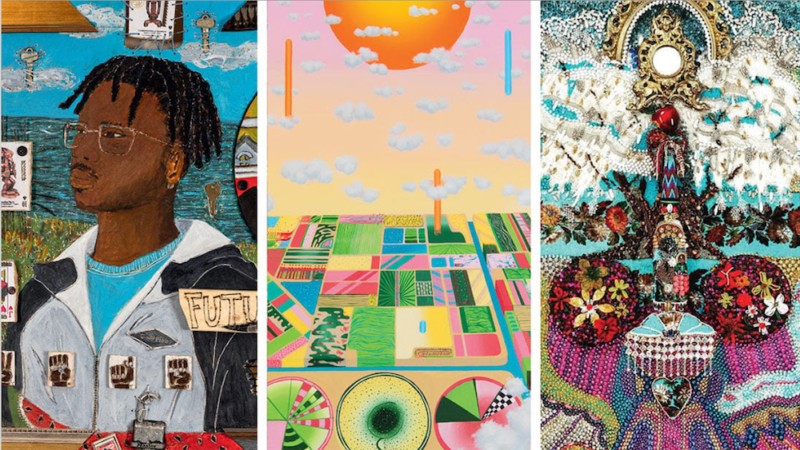“Solitary Woman in a Glass House: Visual Translations of Selected Emily Dickinson Poems,” a one-artist show of Don Cook’s work, opened earlier this month at the American Institute of Architects (AIA) in Baltimore. On display are Cook’s axonometric drawings (structural drafts of Dickinson’s poems), six maquettes (small architectural models built from cardboard and translucent film), seven watercolor paintings, and three acrylics. The work represents stages in the transformation of Dickinson’s untitled poems from word-lines on a page to yet-unrealized human-sized pavilions.
This is a unique project that shines light on the collection of disparate processes that make up both art and design. Cook begins with a poem and renders it visually by creating a physical structure out of its verbal roots. These first-level transformations look like pared-back architectural drawings – fine, black lines on a white page. From these sketches, Cook builds cardboard models that he can pick up and hold in the palm of his hand. Most resemble one-story residential buildings in the tradition of Mies van der Rohe and Richard Neutra. Cook then creates 4 ¼” x 7 ½” watercolor studies of those models – sometimes in color, sometimes in black-and-white – and, eventually, paints them as 36” x 56” acrylics on canvas.
Each phase of the work represents an important deviation from the original literature. Between Dickinson’s poem and Cook’s axonometric sketch, words are abandoned. The sketches refer to the poem by number only, which is the standard way of referencing her work, and exist on the page in a purely visual form. Between the axonometric sketch and the maquette, the poem loses its relationship to the page and takes form as a three-dimensional entity. Between the maquette and the watercolor, the poem returns to the “page” in an altered form and is given a name – Cook selects from Dickinson’s words a title and embeds it in the painting. By the time Cook moves the watercolor study to canvas, he has completely appropriated the material. “’There is a Zone’ Poem 1056” houses Dickinson’s spirit, but it is Cook who, aesthetically, is in control.
In translations between languages, meaning is almost always lost. Translators struggle (and fail) to render the essence of the entire historical significance of words in a culture through linguistic manipulation. Cook refers to his work as “translation,” but he may gain more than he loses through the creative stages that he has defined. By declaring the project’s origins as literary, he accumulates references from fiction and poetry. In “’Were I with Thee’ Poem 249”, the sleek, black house set against the glittery skyline of Los Angeles somehow manages to contain both Emily Dickinson and Raymond Chandler. “’Scarlet Experiment’ Poem 861” breaks Dickinson’s loneliness by providing her with the artistic support 20th century master architects – by populating her Neutra-esque space with a le Corbusier chair.
Cook acknowledges that his work is incomplete – the final transformation, from acrylic to pavilion – has not yet been made. At the bottom of the exhibition’s information sheet, he notes this fact and opens himself up for collaboration: “We are interested in the opportunity of building full-scale pavilions based on these translations. If you would like to discuss this possibility, please contact…” A potential sub-title for this exhibition: “Step by Step: How One Builds a Pavilion.”





